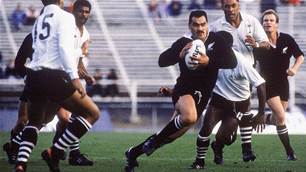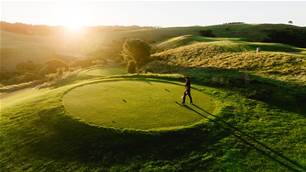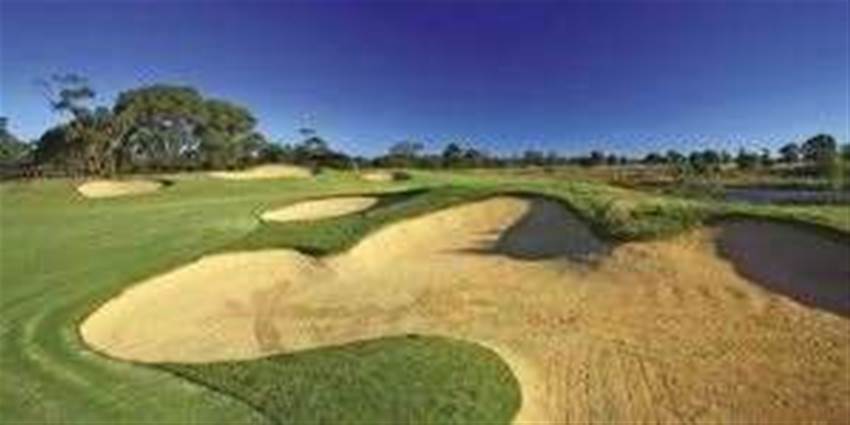One of the impressive recent additions to the eastern edge of the Sandbelt is the Sandhurst Club – a 36-hole private golf complex just 35 minutes’ drive from the CBD.
For the avid golfer, Melbourne’s south-eastern suburbs might best be described as paradise. From the world famous Sandbelt layouts to the spectacular fairways of the Mornington Peninsula, the region has a plethora of outstanding courses seemingly at every turn.
One of the impressive recent additions to the eastern edge of the Sandbelt is the Sandhurst Club – a 36-hole private golf complex just 35 minutes’ drive from the CBD.
It is nearly 21 years since the idea for Sandhurst was conceived and over the following years the plan morphed into a project that would see the creation of a new master-planned residential community, with two championship-standard golf courses, clubhouse, training facility. and a permanent home for the PGA of Australia at its hub. Ambitious … yes. Impossible … no.
Today, most of the surrounding real estate has been sold, the PGA is entrenched and both Peter Thomson and Ross Perrett-designed layouts – known as the North and Champions courses – are continuing to evolve as fine challenges for players of all abilities.
With five-time British Open champion Thomson having such strong ties and a love of golf in Scotland, it should not come as any surprise that a course bearing his the name might, in some part, pay homage to the great links of the Home of Golf. The North course does just that.
It is a layout that closely follows Thomson’s philosophy of design, which comes from the traditional links-style courses of Scotland where the belief is that golf is a game played along the ground, not in the air.
There was high expectation attached to the project, given the new layout’s proximity to the Melbourne Sandbelt and the finest courses in the land. With the aid of modern construction equipment, computer-aided design and a lot of imagination, Thomson and Perrett were successfully able to turn degraded cow pastures into rolling links land.
They delivered a fine course that has grown in stature as its playing surfaces and the wild grasses surrounding most fairways have matured, giving the layout even more definition.
The aim was to build upon the indelible characteristics of the old Scottish links. If the bagpipes aren’t whining in your ears as you wander down the 1st fairway, you will undoubtedly be consumed by their eerie presence as you stand on the 3rd tee.
This 185-metre par-3 is the signature hole of the North course and easily transports you to the 1st hole at Prestwick, the 11th at Royal Troon or the 13th at North Berwick – holes that have been made famous because a stone wall borders an edge of the putting surface.
Thomson pays homage to this design trait at the 3rd, known as ‘Wall’, with a 1.6-metre high stone wall flanking the entire left side and rear of the green. There are no bunkers on this gem of a hole, just a slightly rolling landscape that flattens out to accommodate the putting surface next to the L-shaped wall.
Wind plays a major factor at Sandhurst and Thomson – drawing on more than 60 years of playing the Sandbelt – has routed the North course to take advantage of prevailing breezes as well as unusual winds.
The back nine also has some wonderful highlights including the 497-metre par-5 11th – known as ‘Purgatory’, which rewards the player for risking everything from the tee in trying to clear two fairway traps to get a generous kick forward to put the green in range for two shots.
The 321-metre par-4 14th is a delightful short dogleg right while the 392-metre par-4 18th is a solid closing hole with water left, seven bunkers bordering the fairway left and right and another three large sand traps guarding the equally grand putting surface.
The adjoining Champions course, which opened for play in 2008, covers more undulating land than its neighbour and, therefore, offers a greater variety of holes and shot demands, making it a slightly more memorable experience.
While the surrounding residential development is more intrusive on the Champions course than the North layout, the quality of the holes and the playing surfaces guarantee a satisfying round.
The wide-sprawl bunkering is typical Thomson and Perrett, while it is hard not to be impressed by the size and shaping of the greens on each hole, which have each been dedicated to a past winner of the Australian PGA Championship. This makes for an enjoyable added feature of a round as every tee has a plaque commemorating a player with a brief story of their career. For example, the 7th hole is dedicated to Kel Nagle, the winner of a record six PGA championships, while other players immortalised include Craig Parry, Greg Norman, Ossie Pickworth, David Graham and Wayne Grady.
This layout is more of the traditional Sandbelt-style with gentle fairway contours, open-fronted large greens and some fairways lined by ancient Red River gums.
“From a design point of view, the holes offer plenty of variety,” co-designer Ross Perrett says. “No two are the same. It will eventually be seen as a course of endless fascination with primary hazards dictating play.”
Ever the strategist, Thomson brings the same emphasis of thinking golf to his course designs and this can be seen from the opening shot of the round. The 376-metre par-4 1st, named after the three-time PGA winner Carnegie Clark, offers a generously wide fairway for players who resist using the driver, in preference for a fairway metal to leave a longer second shot into the green. The further you drive the ball from the 1st tee, the narrower the cut portion becomes and the more likely a bogey will be scored after hitting from the rough.
Smart play is also needed at the short par-4 4th hole, which appears seemingly easy when standing on the tee but the full extent of the test becomes apparent as you head down the fairway. This classic two-shotter is just 337 metres from the back markers and the two bunkers seen to the right of the fairway provide the best line for the drive. Hitting as close as possible to these two hazards – without dribbling into the sand – leaves you in the best spot to hit a short iron at any pin position on a green that is angled diagonally away from right-to-left. A drive down the middle of the fairway leaves a tough and obscured shot over a large, bunkered ridge. Eric Cremin, who won two PGA titles in the 1930s and was runner-up in the championship a record seven times, would be proud to have his name on this gem.
One of best holes on the Champions layout is the shortest hole, named after the shortest of the PGA winners celebrated here – Norman Von Nida. The 138-metre uphill par-3 is affected by wind so your club selection here is vital to avoid the waste bunker stretching across the front of the green and the three deep bunkers right beside the putting surface. The green is also long and narrow, which is not unlike the shape of the famed 10th hole at Kingston Heath but this modern creation is without the dramatic slopes off the lips of bunkers.
If you find it tough going on the courses, you might want to book some time with a coach at the PGA’s Golf Learning Centre, which has been established in recent times to offer world-class teaching and training facilities.
Related Articles

International Spotlight: Omanu Golf Club

Celebrity Kiwi couple tee off in paradise













